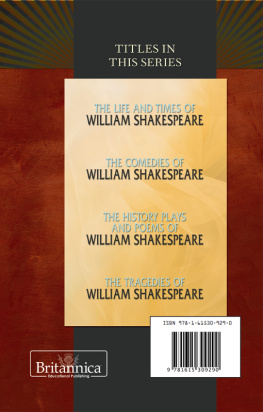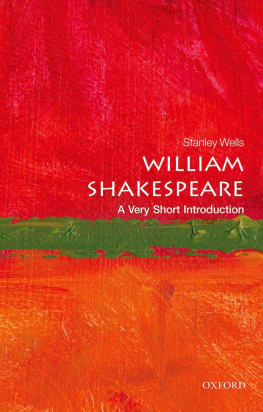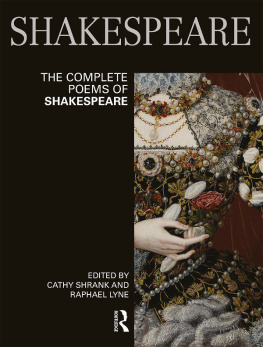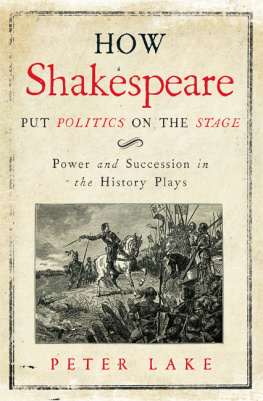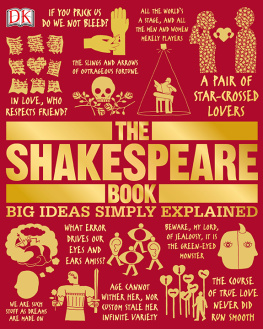

Published in 2013 by Britannica Educational Publishing
(a trademark of Encyclopdia Britannica, Inc.)
in association with Rosen Educational Services, LLC
29 East 21st Street, New York, NY 10010.
Copyright 2013 Encyclopdia Britannica, Inc. Britannica, Encyclopdia Britannica, and the Thistle logo are registered trademarks of Encyclopdia Britannica, Inc. All rights reserved.
Rosen Educational Services materials copyright 2013 Rosen Educational Services, LLC.
All rights reserved.
Distributed exclusively by Rosen Educational Services.
For a listing of additional Britannica Educational Publishing titles, call toll free (800) 237-9932.
First Edition
Britannica Educational Publishing
Adam Augustyn: Assistant Manager
J.E. Luebering: Senior Manager
Marilyn L. Barton: Senior Coordinator, Production Control
Steven Bosco: Director, Editorial Technologies
Lisa S. Braucher: Senior Producer and Data Editor
Yvette Charboneau: Senior Copy Editor
Kathy Nakamura: Manager, Media Acquisition
Kathleen Kuiper: Senior Editor, Arts and Culture
Rosen Educational Services
Jeanne Nagle: Senior Editor
Nelson S: Art Director
Cindy Reiman: Photography Manager
Amy Feinberg: Photo Researcher
Brian Garvey: Designer and Cover Design
Introduction by Adam Augustyn
Library of Congress Cataloging-in-Publication Data
The history plays and poems of William Shakespeare/edited by Kathleen Kuiper.
p. cm.(Shakespeare: his work and world)
Includes bibliographical references and index.
ISBN 978-1-61530-930-6 (eBook)
1. Shakespeare, William, 15641616Histories. 2. Shakespeare, William, 15641616
Poetic works. 3. Historical drama, EnglishHistory and criticism. I. Kuiper, Kathleen.
PR2982.H49 2013
822.33dc23
2012032633
On the cover: French actor Denis Podalydes performs as the title character of William Shakespeares The Life and Death of Richard the Third, staged in 2010 as part of a theatre festival in Avignon, France. AFP/Getty Images
Pages 1, 10, 35, 59, 74, 88 Hulton Archive/Getty Images

T he very concept of a history play was a novel one in Shakespeares time. For centuries, dating back to the ancient Greeks and Romans, dramas had been broadly defined as either tragedies, meaning stories of great people who are struck down by calamitous events, or comedies, which concern everyday citizens reveling in the follies of public life and end happily. History (or chronicle) plays began to be considered a discrete type of drama only in Shakespeares England. The first example of the genre, The Famous Victories of Henry the Fifth, was written anonymously sometime between 1583 and 1590. History plays could be either comic, tragic, ormost commonlya combination of both, but the genres sole defining feature is the presentation of historic events in a chronological fashion.
As evidenced throughout this book, Shakespeare is, in many ways, the originator of the history play. He worked in the nascent genre to create works of such striking originality and depth that they came to define history plays throughout the subsequent centuries. His history oeuvre consists of two tetralogies, each of which follows a series of sequential English monarchs, as well as scattered stand-alone works that treat a historical personage over the course of a single play.
While Shakespeares historic plays do loosely follow historical events, he takes much dramatic license with the facts in order to present more compelling stories. The events of these plays are primarily accurate, but the works focus and tone epitomize the aphorism that history is written by the winners. An aspect of his lax treatment of the historical record is seen in the political undercurrent that creeps into some of his plays, such as the contrasting depictions of similar murders by Richard III and Henry VII. Richard is portrayed as evil and conniving while Henrywho, not coincidentally, was the founder of the Tudor dynasty and grandfather of Shakespeares queen, Elizabeth Iis portrayed sympathetically, in deference to the powers ruling England at the time.

An actor returns to the stage during a 2008 production of Richard III in Stratford-upon-Avon, Shakespeares hometown. Cate Gillon/Getty Images
Shakespeares earliest history play, Henry VI, Part 1, inaugurates his first tetralogy with the early years of the 15th-century reign of Henry VI. The play begins with the funeral of the title characters father, Henry V, and the newly crowned young king is soon thrust into war with France. The action of the drama alternates between court intrigue in England and the war in France. The play concludes with the Earl of Suffolk convincing Henry to marry Margaret of Anjou, which is an effort to end the war and increase the earls influence with the king.
In Henry VI, Part 2, Suffolk, who has been elevated to a duke by a grateful Henry, sees his influence over Margaret (and therefore the king) deepen as the two begin an affair. The court machinations depicted in Part 1 grow even more intense with Margarets arrival, as the guileless Henry is unable to prevent Richard Plantagenet, the duke of York, from amassing power in the hopes of attaining the throne. Plantagenet encourages an insurrection led by Jack Cade, which is eventually put down but not before it exposes Henrys weakness. The English nobles then choose sides, and the play ends with the country on the brink of civil war.
The rivalry between the Lancasters (Henrys house) and the Yorks blossoms into the Wars of the Roses (145585) in Henry VI, Part 3. A mad and defeated Henry is unable to prevent the Yorks from seizing power, and he agrees to disinherit his son and pass the crown to the Yorks when he dies. This compromise infuriates Margaret, who subsequently defeats and kills Richard Plantagenet in battle. However, the crown remains with the Yorks as Plantagenets son claims the throne from an ineffectual Henry and reigns as Edward IV. The two houses battle back and forth for the rest of the play, with Henry briefly regaining the throne, but the drama ends with Edward as king, Henry dead, Margaret banished, and Edwards younger brother Richard revealed as a power-hungry schemer.
Richard moves into the forefront of the action in the final play of the first tetralogy, Richard III. Befitting someone who fought against the forebears of one of Shakespeares contemporary monarchs, Richard is presented as one of the greatest villains in Shakespearean drama. Although his actions throughout the play are deplorable, the character of Richard is so complex and well drawn that he is one of the most popular Shakespearean roles. (Curiously, in contrast to his image as a nefarious murderer made common by this play, the real Richard III is regarded by modern scholars as an adequate leader whose reputation was marred by propaganda.)
The play begins with a soliloquy by the deformed Richard, who expresses jealousy of his brother Edward and reveals his plan to take the throne for himself. Richard woos and marries Lady Anne, who is at first resistant to his advances since Richard had earlier killed both her husband and her father-in-law. Soon after his brothers death, Richard proceeds to kill every person who stands in his way, including the kings heirs, Richards own two young nephews. Aided by the Duke of Buckingham, who arranges executions and spreads damning rumours about Edward and the legitimacy of his children, Richard ascends to the throne. Henry Tudor, earl of Richmond, challenges Richards claim to the throne and gathers an army. The night before the climactic Battle of Bosworth Field, Richard is haunted by the ghosts of his victims. The next day Richmond kills Richard in combat and ascends to the throne as Henry VII.

